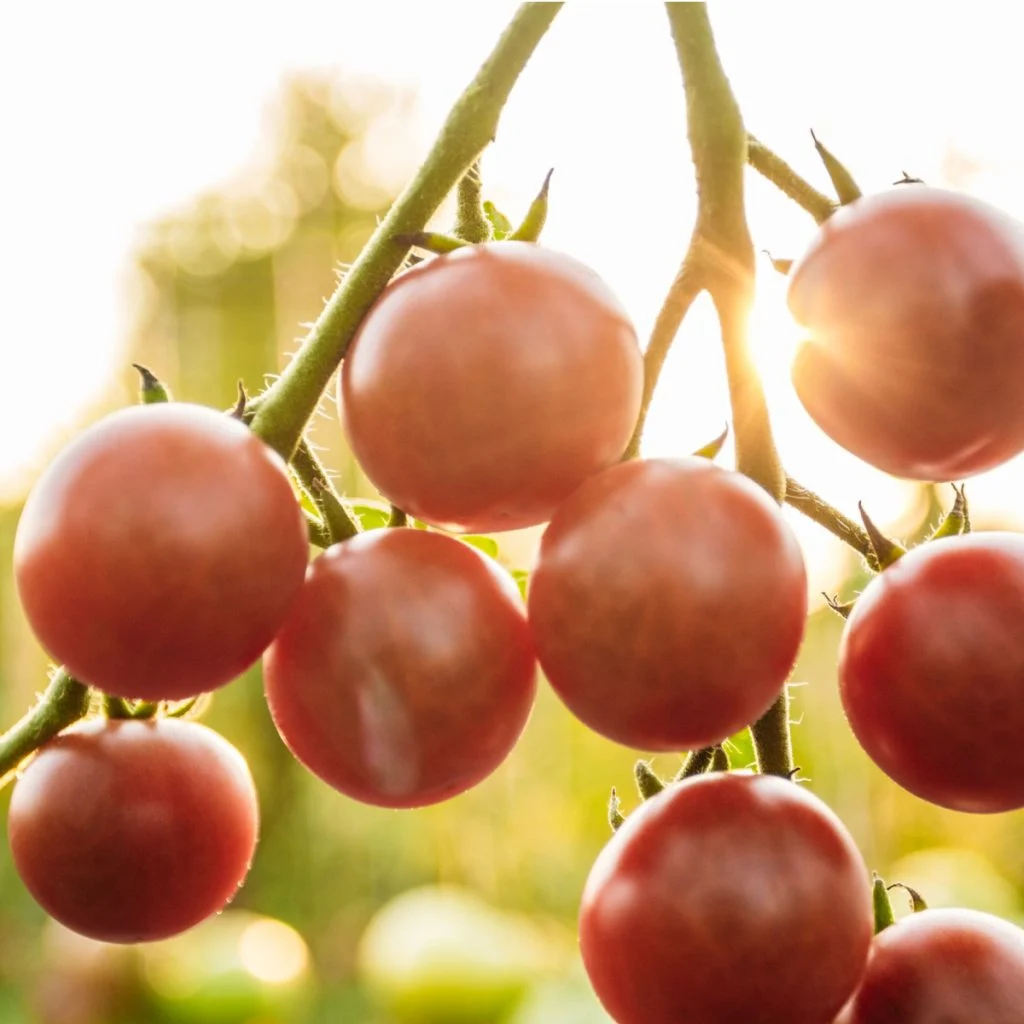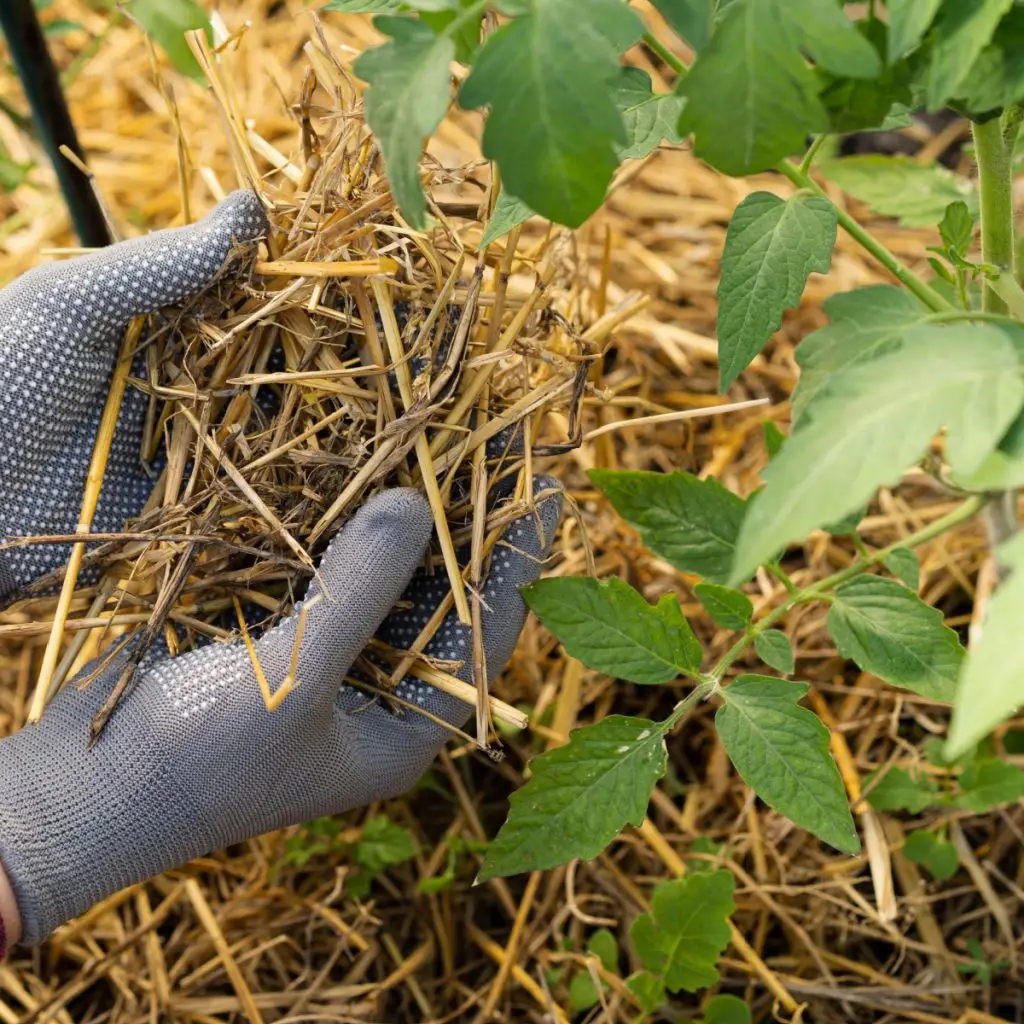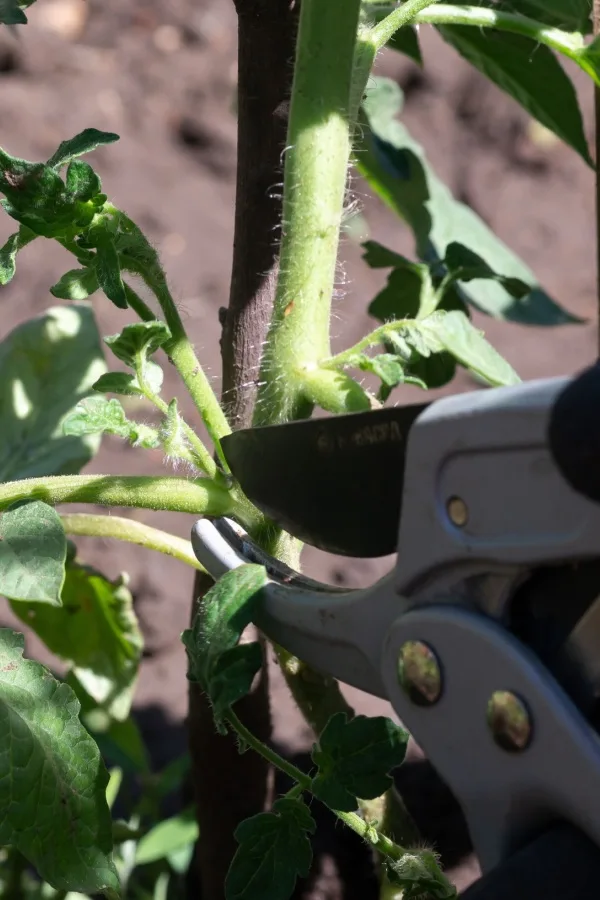Wondering how to give your tomato plants a little help to get through all of this hot weather? Tomato plants love the warmth of summer, but when the temperatures soar too high, even heat-loving tomato plants can begin to struggle.
The key to growing healthy, productive tomato plants during hot spells isn’t to shield them from the heat – but to simply give them the tools they need to handle it. With the right care, tomato plants can not only survive high temperatures, but actually thrive and produce some of their biggest and best harvests of the season.
By focusing on smart watering, mulching, pruning, and fertilizing, you can create an environment that allows your tomato plants to handle the heat like pros.

How To Help Tomato Plants Thrive In Hot Weather
Why Tomatoes Struggle In Extreme Heat
Tomato plants typically grow well when daytime temperatures are between 70°F and 85°F. But when temperatures climb consistently above 90°F – and especially when nighttime temps stay above 75°F -plants can begin to show signs of stress.
One of the biggest issues with prolonged heat is blossom drop. The plant’s flowers can fail to develop into fruit when the temperature gets too hot. Why? Because it becomes more difficult for pollination or fruit set to take place.
High heat can also lead to curling leaves, droopy plants, and dry soil that causes the roots to overheat or die back. But here’s the good news: tomatoes are resilient. With just a few changes to how you care for your plants, you can help them beat the heat and keep growing strong.
In fact, these strategies will not only protect your plants in the heat, they can actually help them produce better and more fruit through the rest of the summer. And it all starts with making sure your plants have a great layer of mulch!
Mulch – The Biggest Help To Tomato Plants In Hot Weather
One of the best things you can do for your tomato plants during hot weather is to apply a thick layer of mulch around the base of each plant.

Mulch works like a protective blanket. It helps to insulate the soil, keeping it cooler on hot days and warmer during cool nights. It also holds in moisture, which is especially important during long dry spells. See: The Best Way To Mulch Tomato Plants – 3 Simple Secrets To Protect & Power Your Tomatoes!
For tomatoes, a layer of four to six inches of mulch is ideal. Materials like straw, grass clippings, shredded leaves, or untreated hay all make great options. These natural mulches not only protect the roots from overheating but also break down over time to add organic matter to the soil.
It’s important to mulch all the way out to the drip line of the plant (the outermost edges of the leaves) and not just around the base of the stem. Doing so helps protect the full root zone and prevent weeds from competing for water.
Deep Watering – Less Often, But More Thoroughly
One of the biggest mistakes gardeners make during hot weather is watering their tomato plants too often, but not deeply enough. A little sprinkle every day might seem like it helps. But what it really does is encourage shallow root systems. And shallow roots dry out fast in the heat.
Instead, water less frequently but more thoroughly. This is called deep watering, and it’s the best way to drive tomato roots deeper into the soil where it stays cooler and wetter for longer.

A good rule of thumb is to give your tomato plants a deep soak every four to five days. This, of course, also depends on rainfall and your soil type. Clay-heavy soils hold moisture longer. Meanwhile, sandy soils drain faster and may need watering every three days or so.
When you water, do so slowly at the base of the plant to allow the moisture to soak down several inches. If water runs off quickly, pause and let it absorb before continuing. Soaker hoses or drip irrigation work especially well for deep watering and help conserve water too.
Keep in mind that tomato plants need about 1 to 1.5 inches of water per week. A soil moisture meter with a long probe can help you know just how moist the soil is down at the root level. Affiliate Link: Soil Moisture Meter With Long Probe.
Pruning Up Underneath Plants For Better Air Flow
Hot weather creates more than just thirsty soil. It also increases humidity around dense tomato plants. When the air becomes stagnant and wet around the base of your plants, it can lead to disease problems like blight, mildew, and mold.
That’s where summer pruning makes a big difference. Start by removing the lower leaves and branches. It’s best to clear the bottom 6 to 10 inches of each tomato plant. This space under the plant should be kept open and clear of foliage. This will allow air to circulate freely. It also helps sunlight reach the soil, which can reduce disease risk even more.

Removing a few suckers or overly crowded branches higher up can also improve airflow. This doesn’t mean stripping the plant bare. You only need to thin it enough so that you can see some space between the leaves.
This small step can go a long way toward keeping your tomato plants healthy. Especially during the heat of summer when disease pressure is at its highest.
Feed With Liquid Fertilizer At Half Strength
Fertilizing tomato plants in summer can be tricky. In the heat, plants often slow down their growth temporarily. But they still need nutrients to recover from stress and produce fruit. The best approach is to give them a gentle but steady supply of nutrients.
Rather than giving plants a full dose, it’s better to feed at half strength every 10 to 14 days. And with a liquid fertilizer. Liquid fertilizers are easy for tomato plants to absorb. Especially during heat when root activity is slower and the plant is under stress. They also help hydrate the plant with each feeding.
Choose a fertilizer with a slightly higher ratio of phosphorus and potassium. These nutrients support flowering, fruit development, and overall plant health without promoting excessive leaf growth. Too much nitrogen during heat waves can actually cause plants to grow too quickly and weaken. Affiliate Link: Farmer’s Secret Tomato Booster Fertilizer (32oz) – Super Concentrated.
With a little mulch, good watering, pruning and fertilizing, tomato plants can thrive in hot weather. And you can look forward to a great harvest all summer long! For even more tips on keeping your tomato plants safe & healthy all season long, see our article: Mid-Season Tomato Plant Care – Essential Tips for a Healthy Harvest.
I Grow Tomatoes
Follow Our Facebook Page For Even More Great Tomato Growing Tips! I Grow Tomatoes Facebook Page
I Grow Tomatoes is a website created for those who love all things about tomatoes – from planting and growing – to cooking and canning! We publish two articles every week, 52 weeks a year. Sign up today to follow via email! This article may contain affiliate links.
